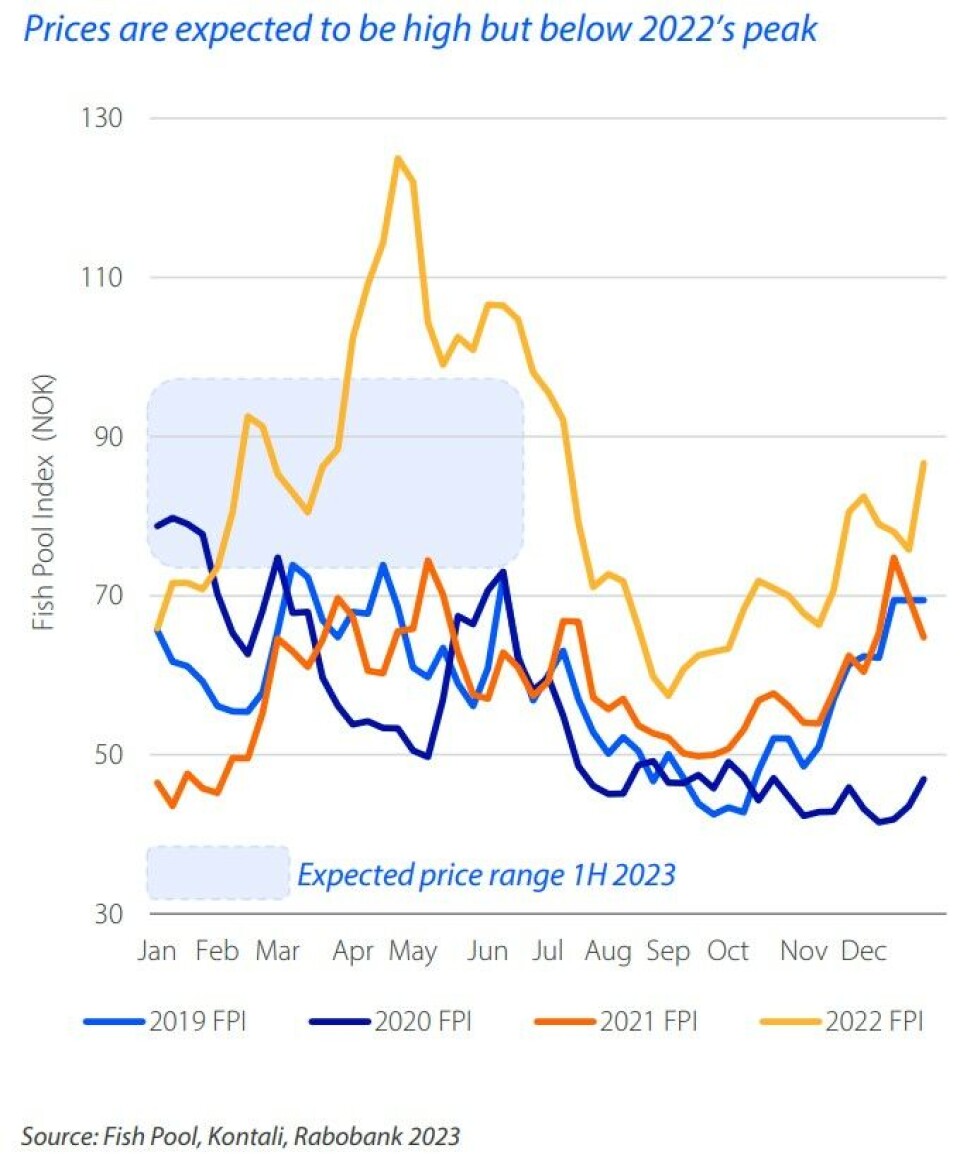
Salmon prices set to stay strong, says Rabobank
Retail demand, low supply, and high price of other proteins will help fish surf the seafood slump
Resilient demand for salmon combined with modest supply growth is expected to keep prices high in the first half of this year, although they won’t reach the peak achieved during the same period last year, according to aquaculture lender Rabobank.
Seafood sales are being impacted by the squeeze on consumers, said the Dutch bank’s senior global seafood specialist, Gorjan Nikolik, but salmon seem to be more resilient than shrimp.
Salmon supply in H1 2023 is expected to be more stable than in 2022 and to grow by up to 2%. This is higher than 2022 growth but low compared to historical levels.
“Although recessionary dynamics weakened demand in the second half of 2022, salmon is one of the least affected seafood species,” Rabobank said in its Global Aquaculture Update for H1 2023, which was lead authored by Nikolik.

“Relatively high consumption at retail and high prices of other proteins and seafood species support salmon demand. This, in combination with low supply growth, sets the scene for high prices in 1H 2023, though they will probably fall below the peak levels seen in 1H 2022.”
The bank said that although the proposed resource tax on Norwegian farmed salmon and trout was yet to be finalised, “a significant additional tax is likely to be imposed on salmon farmers”.
“This could have both short- and long-term negative effects on growth and lead to a new wave of innovation in the industry,” added Rabobank.
Chile
Supplies of Chilean salmon are expected to be more regular in 1H 2023 after a volatile 2022, albeit with virtually no growth.
Demand in Chile’s primary market, the US, is expected to remain strong enough to keep prices high, although probably not at 2022 levels.
Supplies of Scottish salmon are expected to grow by 7% after falling by 14.7% last year.
Shrimp farmers face a more difficult few months, said Rabobank.
“Sharp price corrections and persistently high costs challenged shrimp farmers in 1H 2022. Weaker demand in the US and EU and high supply from Ecuador led to low prices, which will only begin to improve when supply growth declines and demand responds to lower prices,” said the bank. “Whether this inflection point will occur during 1H 2023 or later in the year is hard to estimate.
“Both Asian and Latin American producers will be affected by low prices, but supply growth in 2023 will differ per region. In Ecuador, a high US dollar and new legislative limitations on fuel subsidies have left many smaller shrimp farmers unprofitable. Nevertheless, Ecuador is still likely to generate supply growth in 1H 2023, as large players are in expansion mode and have fixed costs to cover. We expect Ecuador and perhaps other Latin American producers to record considerable growth in 1H 2023, albeit less than in 2022.
“Asian shrimp suppliers, especially India, already had negative growth in the second half of 2022. We expect India, Indonesia, and Vietnam to take a more cautious view on seeding for 1H 2023. China is the unpredictable factor. There is speculation that farmers may be bullish due to fewer Covid constraints. However, fears of Covid infections have risen, meaning it may take some time for foodservice demand to improve in 2023.”






















































